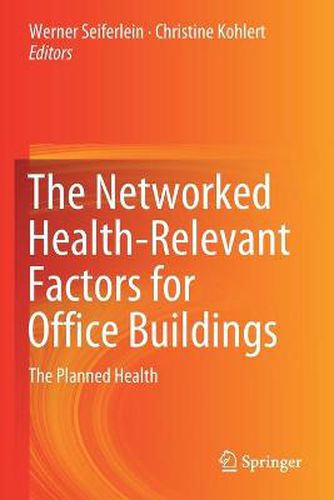Readings Newsletter
Become a Readings Member to make your shopping experience even easier.
Sign in or sign up for free!
You’re not far away from qualifying for FREE standard shipping within Australia
You’ve qualified for FREE standard shipping within Australia
The cart is loading…






This title is printed to order. This book may have been self-published. If so, we cannot guarantee the quality of the content. In the main most books will have gone through the editing process however some may not. We therefore suggest that you be aware of this before ordering this book. If in doubt check either the author or publisher’s details as we are unable to accept any returns unless they are faulty. Please contact us if you have any questions.
People who work in an office spend at least a third of their lifetime in these spaces. The planning of office and administration buildings can therefore contribute a great deal to the satisfaction and well-being of future users. The book looks at the health-relevant factors that affect people in office and administration buildings and therefore deserve special attention in the planning process. In doing so, the authors are guided by a concept of health as defined by the World Health Organization: Accordingly, health encompasses mental as well as social and physical well-being and thus goes far beyond the factors laid down in legal norms and guidelines.
In this volume, architects and designers, physicians and ergonomists deal with all aspects of interior design seen from a health perspective: What role does colour design play, what significance do light, air and noise have? What does a demand-oriented building technology look like and how is the office furniture adequately designed? Which medical and hygienic aspects have to be considered? How can offices be designed in terms of work-life balance and how will the office change in the course of digitalisation?
The book serves as a guideline that can be applied chapter by chapter in the planning of health-promoting office spaces - depending on the interests of the reader. Problems that arise are discussed using examples, and checklists help you with planning and implementation.
The guide is aimed at building owners, architects, engineers, but also at lawyers, psychologists and doctors as well as university members in the field of economics and engineering.
$9.00 standard shipping within Australia
FREE standard shipping within Australia for orders over $100.00
Express & International shipping calculated at checkout
This title is printed to order. This book may have been self-published. If so, we cannot guarantee the quality of the content. In the main most books will have gone through the editing process however some may not. We therefore suggest that you be aware of this before ordering this book. If in doubt check either the author or publisher’s details as we are unable to accept any returns unless they are faulty. Please contact us if you have any questions.
People who work in an office spend at least a third of their lifetime in these spaces. The planning of office and administration buildings can therefore contribute a great deal to the satisfaction and well-being of future users. The book looks at the health-relevant factors that affect people in office and administration buildings and therefore deserve special attention in the planning process. In doing so, the authors are guided by a concept of health as defined by the World Health Organization: Accordingly, health encompasses mental as well as social and physical well-being and thus goes far beyond the factors laid down in legal norms and guidelines.
In this volume, architects and designers, physicians and ergonomists deal with all aspects of interior design seen from a health perspective: What role does colour design play, what significance do light, air and noise have? What does a demand-oriented building technology look like and how is the office furniture adequately designed? Which medical and hygienic aspects have to be considered? How can offices be designed in terms of work-life balance and how will the office change in the course of digitalisation?
The book serves as a guideline that can be applied chapter by chapter in the planning of health-promoting office spaces - depending on the interests of the reader. Problems that arise are discussed using examples, and checklists help you with planning and implementation.
The guide is aimed at building owners, architects, engineers, but also at lawyers, psychologists and doctors as well as university members in the field of economics and engineering.